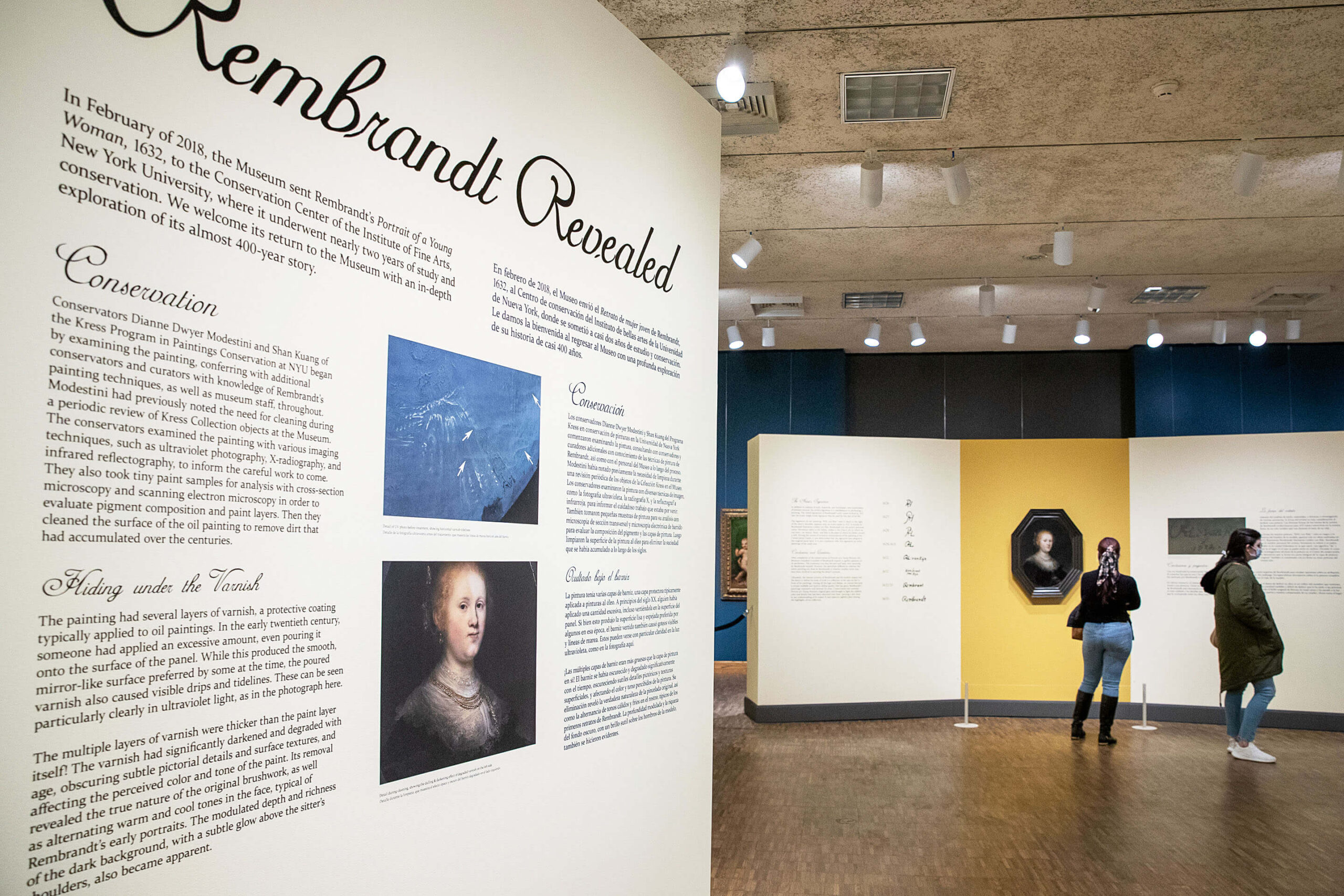The Allentown Art Museum in Allentown, Pennsylvania has recently celebrated the addition of a painting by Rembrandt van Rijn (1606-1669) to its collection. The catch? The museum has already owned this painting for sixty years! Here is the story of how the Allentown Art Museum gained, lost, and then gained a Rembrandt again.
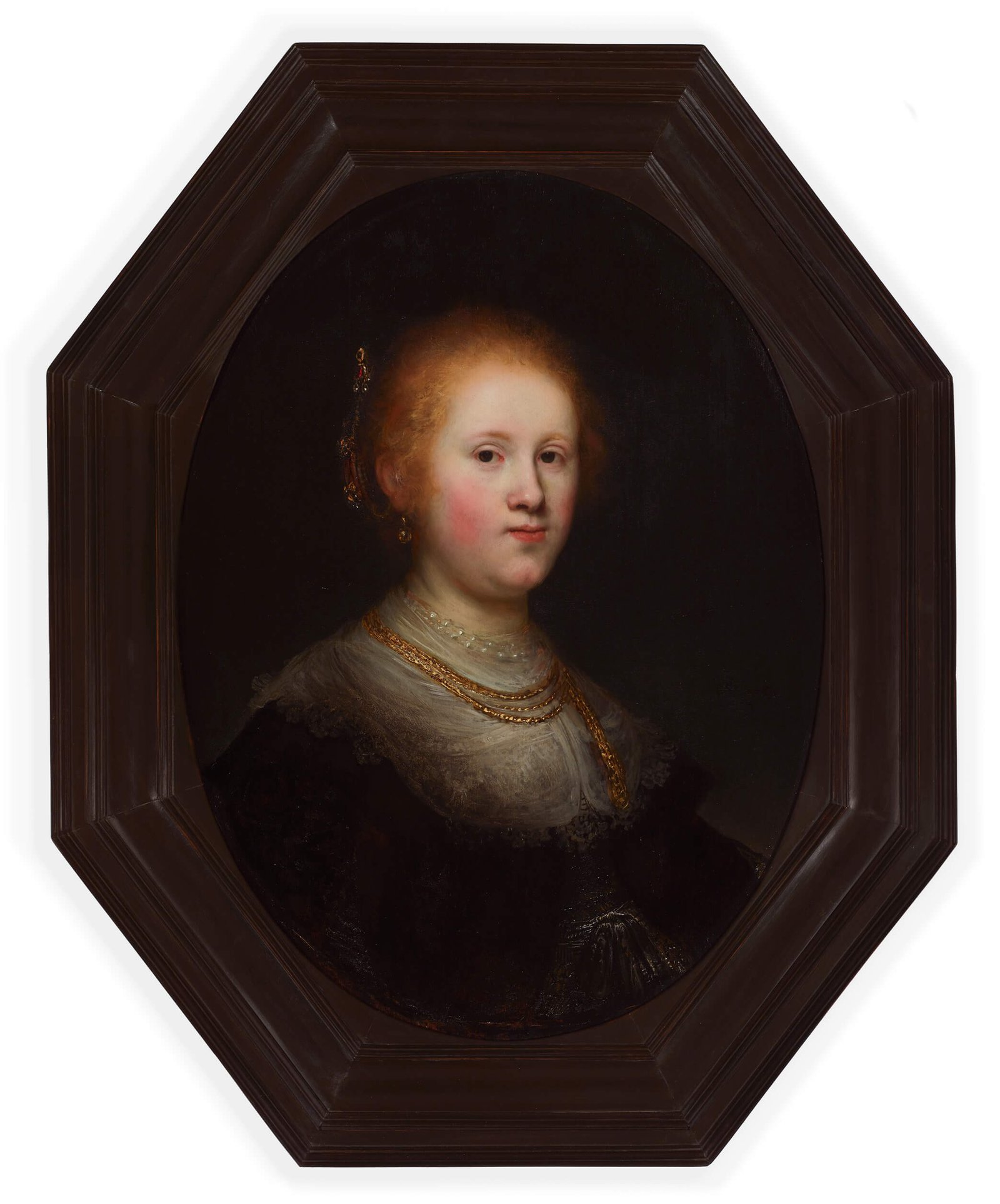
Allentown and the Kress Collection
Portrait of a Young Woman came to the Allentown Art Museum in 1961 as part of the Kress Collection. Samuel Kress (1863-1955) was a Pennsylvania-born businessman who used his dime-store fortune to collect Old Master paintings. Although he eventually gave some of it to the National Gallery of Art in Washington, he did something a bit unusual with the rest of his collection. He donated parts of it to ninety institutions in various cities throughout the United States. Allentown, near Kress’s birthplace, received about fifty works, primarily Dutch and Flemish paintings. Portrait of a Young Woman, which is not actually a portrait but rather a tronie, or study of a model in interesting clothing, was one of them.
Attribution
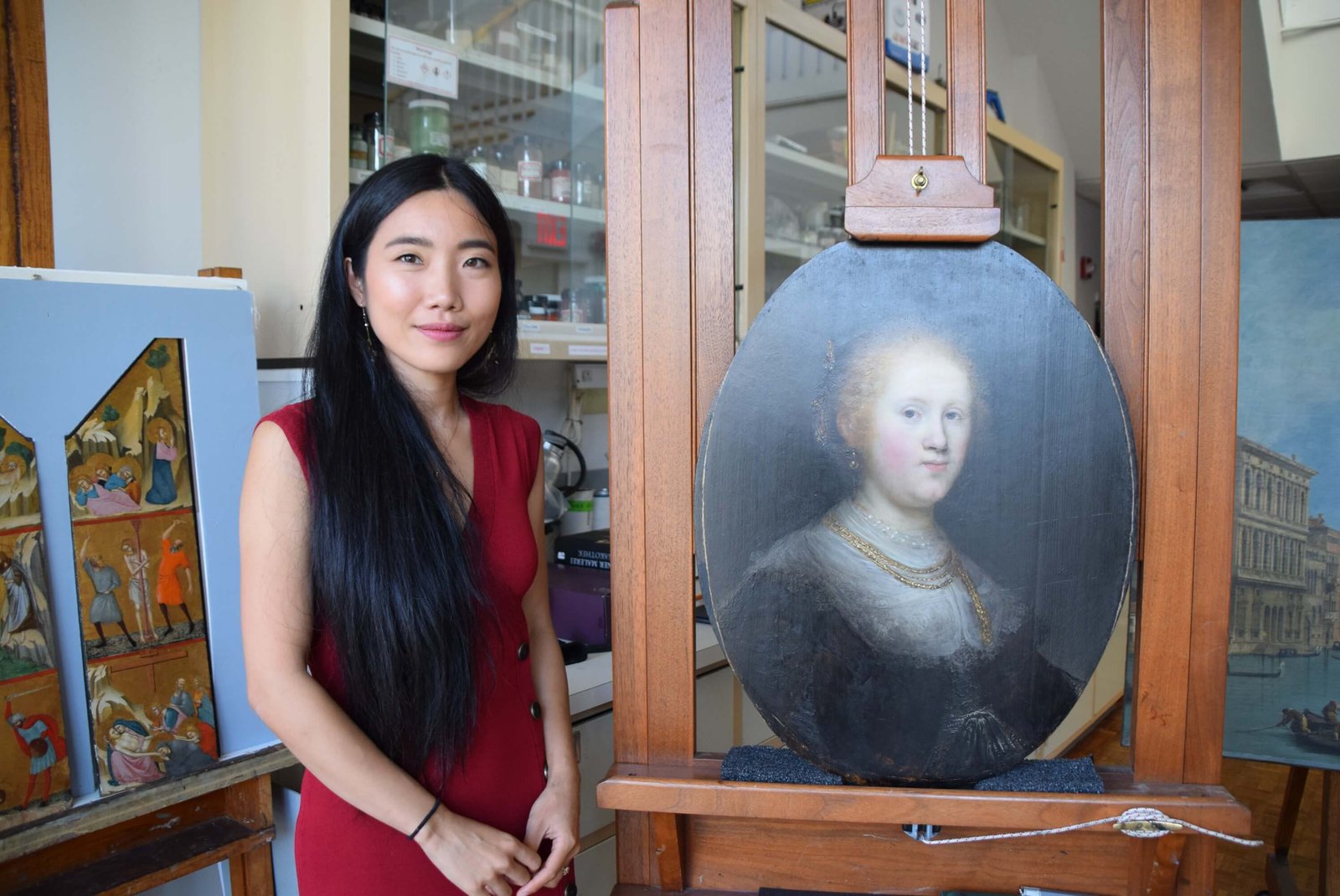
Upon arriving in Allentown, Portrait of a Young Woman had an impressive pedigree and firm Rembrandt attribution. It had spent years in the collection of the Duc d’Orleans in France and the Duke of Sussex in England before Kress purchased it in 1928. Unfortunately, the museum didn’t get to celebrate its Rembrandt for very long. In 1970, scholars from the Rembrandt Research Project threw doubt upon the painting’s authorship, despite the presence of Rembrandt’s signature.
The Rembrandt Research Project was a group of eminent Rembrandt scholars tasked with deciding which paintings are and are not definitively by Rembrandt. It’s more difficult than one might imagine. Rembrandt made a surprisingly large number of paintings in his lifetime, leaving behind a lot to sort through. As was common practice in his day, he ran a workshop, employing other painters to do things like prepare his canvases or even paint select aspects of his commissions. Therefore, the paintings that came out of Rembrandt’s workshop are not all completely autograph (painted in the master’s own hand), even if they carry his signature. It’s generally felt that these contributions by workshop artists are not be as masterful or desirable as those of Rembrandt himself. Unfortunately, with no objective way to determine who painted what, it’s all up to art historian’s opinions, and they don’t always agree with each other.
A work doesn’t have to be fully autograph in order to count as a Rembrandt, but too much workshop involvement will definitely jeopardize a Rembrandt attribution. Additionally, Rembrandt’s assistants and other artists he trained (termed “followers of Rembrandt”) understandably developed techniques and styles similar to Rembrandt’s own. Because of this, their works can sometimes be mistaken for his, even if they were not created as part of his studio. Later generations of profit-motivated art dealers might even add Rembrandt signatures to followers’ paintings in order to sell them for higher prices.
Until it disbanded in 2011, the Rembrandt Research project’s verdict was the final word on these thorny issues. And in 1970, it decided that the Allentown Art Museum’s Portrait of a Young Woman should be attributed to Rembrandt’s studio, not to Rembrandt himself. Its reasoning was essentially that the painting lacks the quality we would expect to find in an autograph Rembrandt. The woman’s face was too monotone, for instance, and her brushwork in her clothing was too muddled.
The Cleaning that Changed Everything
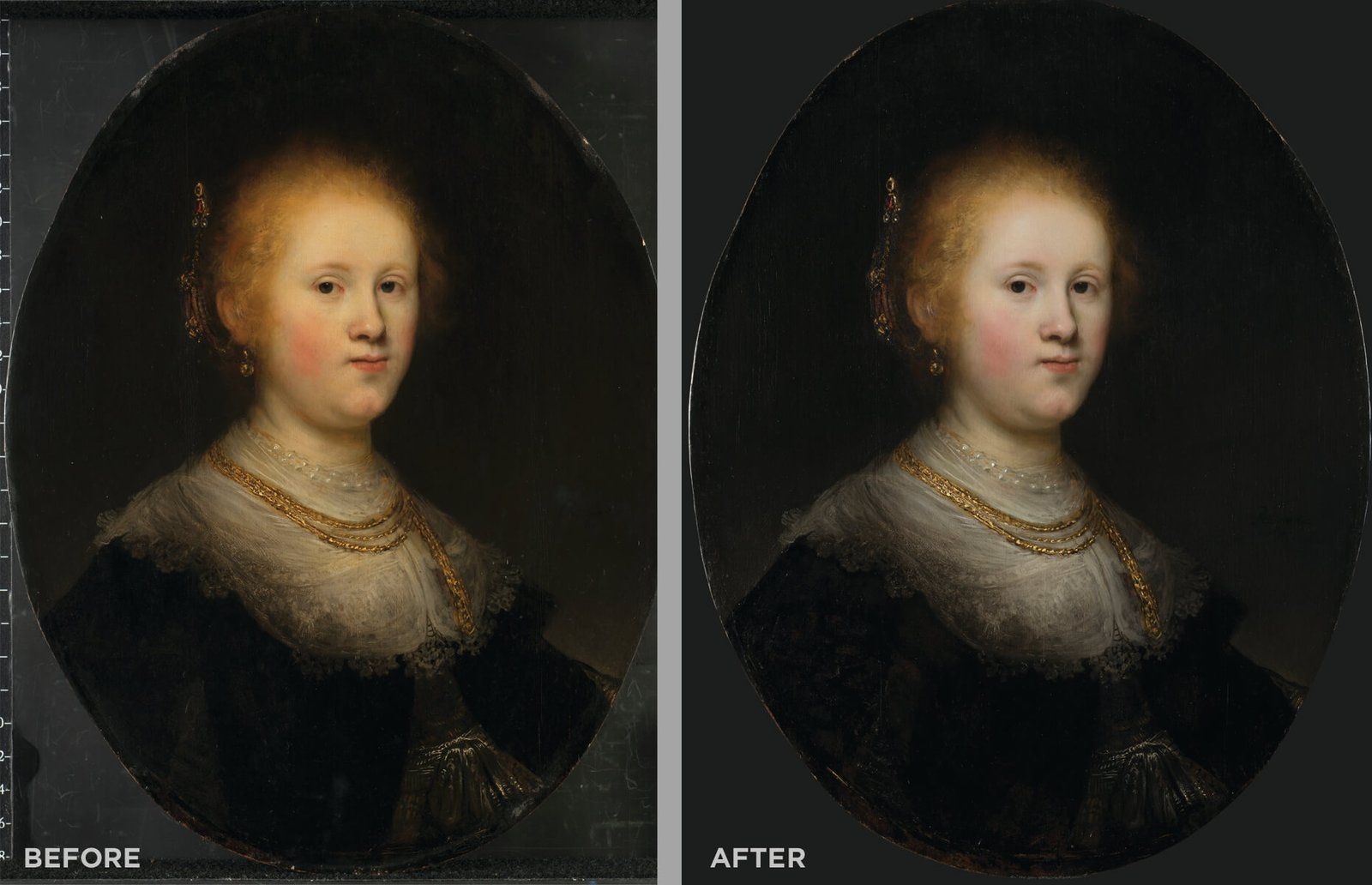
Thus the situation stood for half a century. and the Allentown art museum displayed Portrait of a Young Woman as authored by the “studio of Rembrandt”. Everything changed in 2018, when the painting arrived at the NYU Institute of Fine Arts’s Conservation Center for restoration treatment. There, conservator Shan Kuang analyzed and cleaned the painting. She also made a thorough study of the Rembrandt Research Project’s published opinions on it. She relieved the painting of thick, age-darkened varnish and touch-ups by earlier restorers, uncovering the original paint surface for the first time in centuries. As she did so, she found herself disagreeing with the old criticisms.
As I’m cleaning it […] what I’m reading is not matching to what I’m seeing, that’s when alarm bells began to come up.
Conservator Shan Kuang in a January 26, 2021 online talk for the Allentown Art Museum.
Her discoveries were persuasive enough to warrant a new look from key scholars, who this time sided in the painting’s favor. As Kuang explains the situation, it’s not that the Rembrandt Research Project did something wrong. Instead, experts in the 1970s were looking at the painting through a haze of accretions that prevented them from assessing the work accurately. Attribution is all about the subtleties, like the rosy tone of the subject’s cheeks or the brushwork making up her two-layered lace collar. How could an accurate assessment take place with these details buried under heavy-handed varnish that had literally been poured onto the canvas? Before and after photos (above) make the difference easily apparent. The past fifty years of research into Rembrandt’s career and technique, as well as dramatic new advances in scientific testing on artwork, have also provided new information and insights. The Rembrandt Research Project is no longer around to give an opinion, but prominent Rembrandt scholars such as Arthur Wheelock and Stephanie Dickey now feel confident about re-attributing Portrait of a Young Woman to Rembrandt.
Rembrandt Revealed
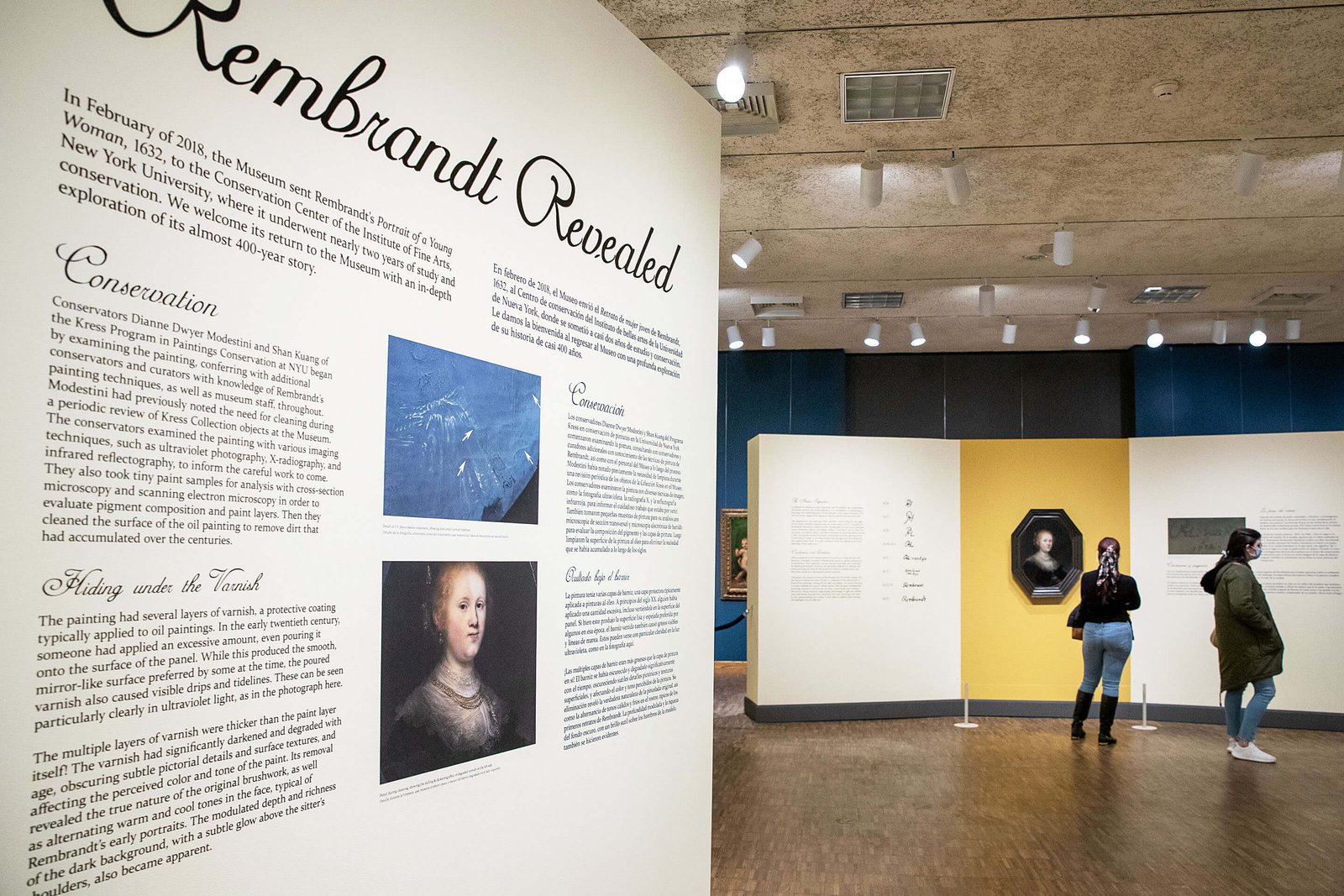
It goes without saying that the Allentown Art Museum is thrilled with this turn of events. The museum has welcomed its new celebrity home with the kind of fanfare most cities only reserve for athletes and entertainers. Rembrandt Revealed, on view from January 24 through May 2, 2021, is a lovely and thoughtful display with numerous English and Spanish text panels explaining the painting’s entire history and the re-attribution process. During my recent visit, museum employees’ genuine excitement and pride in their Rembrandt was heart-warming and clear. Two different guards eagerly approached me to point out Rembrandt’s signature. (Located on the right side of the painting, roughly in line with the subject’s shoulder, it’s difficult to find against the dark background unless you know where to look.) The museum has also created several short videos and hosted two online lectures on the subject, all available on YouTube.
I really love the way that the Allentown Art Museum has decided to frame (pun not intended, but fully acknowledged) the sudden re-elevation of its Rembrandt. Choosing to delve so deeply into the process of restoration and re-attribution is both smart and engaging. The methods by which scholars attribute artworks often seems so arbitrary and bizarre – yes, even to me – but the museum’s narrative demystifies it beautifully. Far from seeming opaque and elitist, the story feels extremely sensible. I was particularly impressed by Kuang’s very accessible online talk and her lucid explanation of how a simple cleaning can overturn decades of scholarly opinion.
Details
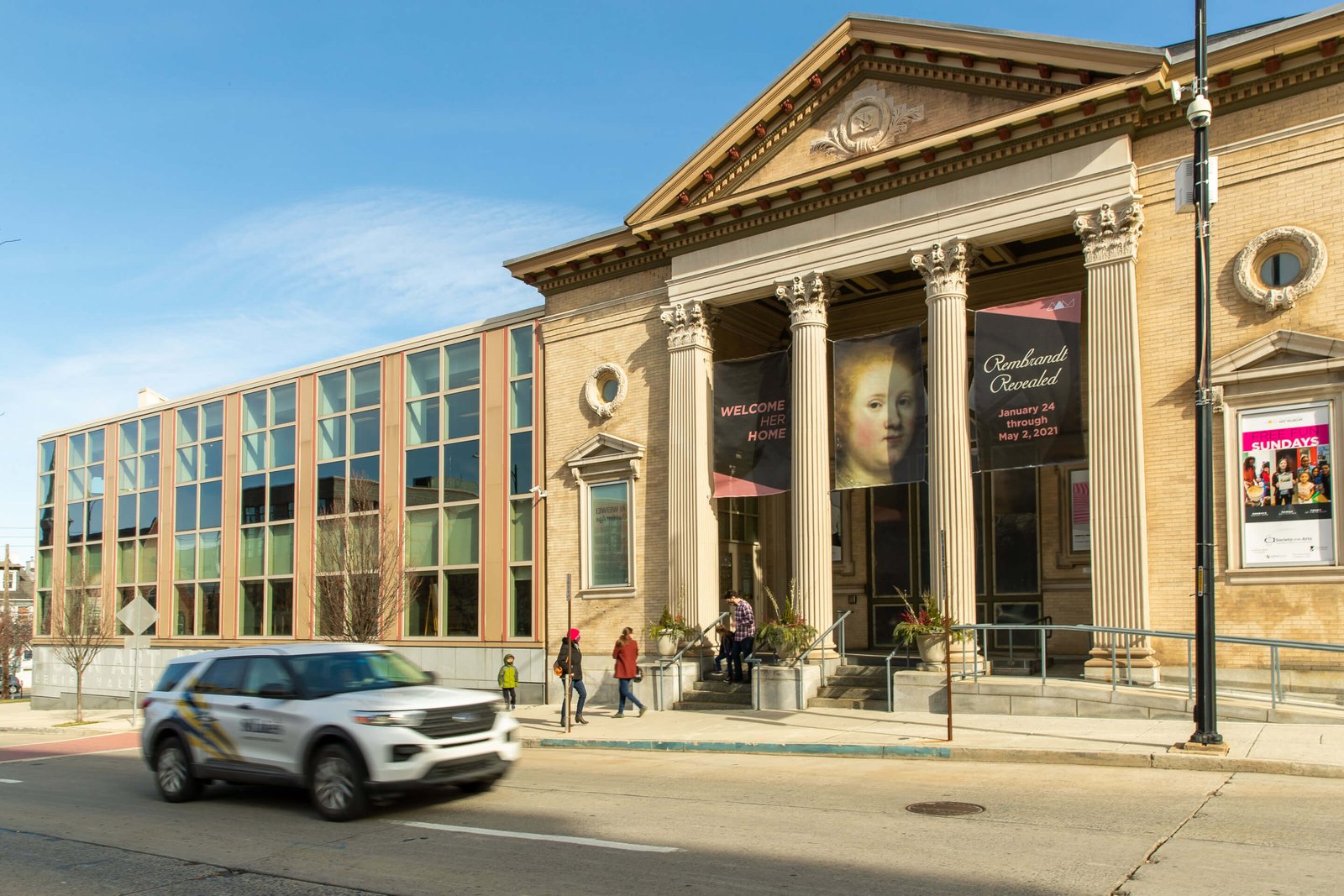
You can visit Rembrandt Revealed at the Allentown Art Museum until May 2, 2021. After that, Rembrandt’s Portrait of a Young Woman will travel to Ottawa to take part in the National Gallery of Canada’s Rembrandt in Amsterdam exhibition. It will return to Allentown for permanent display in November 2021. The museum also has a Kress Collection of Old Master paintings, a nice selection of American art, a Frank Lloyd Wright period room, some Indian sculptures, and more. The Allentown Art Museum is currently open Fridays through Sundays; you can find more details about hours/closings and purchase tickets online.
